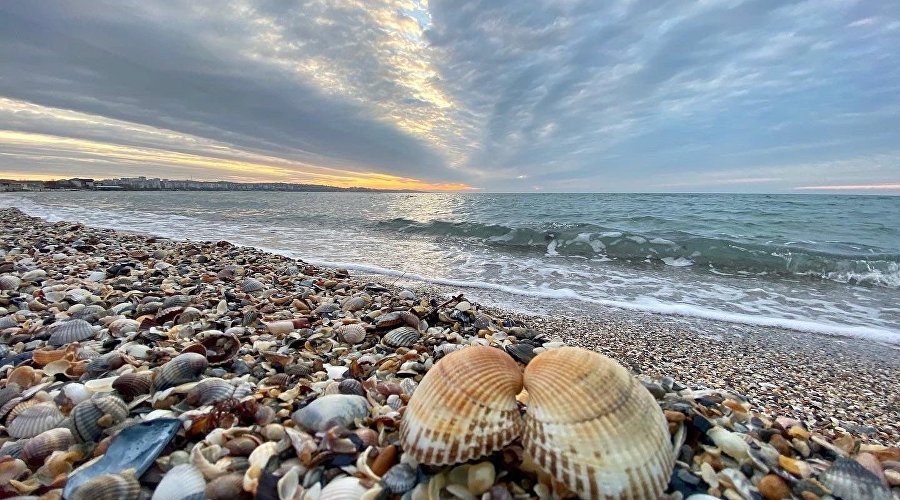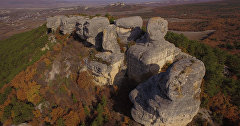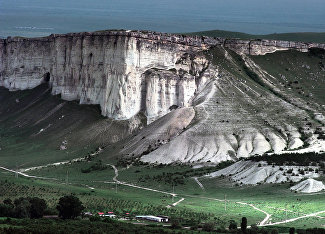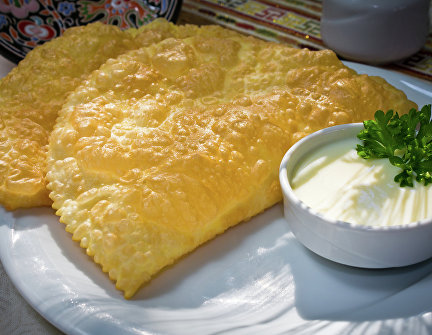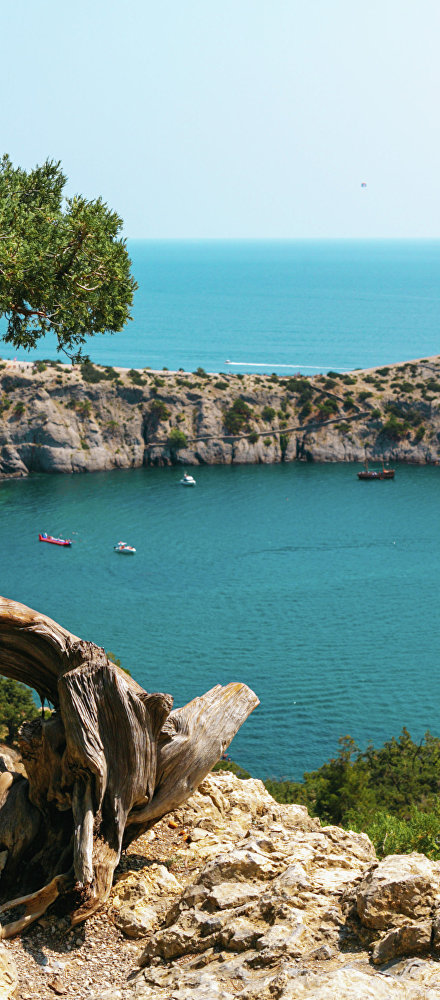So, the pride of Crimea and popular tourist locations are the Yalta mountain-forest, Opukskiy, Kazantipskiy, Swan Islands, Karadagsky reserves, as well as the Crimean National Park. All of them are federal.
Yalta mountain and forest reserve
* The Yalta mountain and forest reserve spreads over 400 hectares along the relief of the South Coast − from Cape Foros to Gurzuf. Here, for example, you can meet the real red deer.
* Many ancient reserved trails have been preserved to this day. Routes that are offered to tourists today: Taraktash trail, Romanov road, Ecological Ring, Alupka-Issary and Biyuk-Issar forest trails, Shaitan-Merdven (Devil's Stairs), Yevreiskaya (Jewish) trail, Koreïz (Miskhor) trail, as well as a trail to the merlons of Ai-Petri, which is one of the most popular and accessible there. On foot this trail can be passed in 1.5 hours, enjoying the views of the centuries-old beech and hornbeam forest.
* And right before the holiday date − January 11 – another 7 new routes were opened in the Yalta Mountain and Forest Reserve: Sigotur, Iograph, Kurchatov Trail, Lake Biryuzovoyeh (Turquoise), The Pallas Pine, Babu-Koryto, Uch-Kosh − Balan-Kaya − Vasilyevka. You can read more about all routes here.

Opukskiy Nature Reserve
* It is second to Yalta Reserve in terms of attendance. Its area is 14.5 thousand hectares.
* The main "hit" of the Opukskiy Reserve is the pink Lake Koyashskoyeh, which is of rich pink color at the height of summer, when the weather is extremely hot. Another attraction in spring is the luxurious flowering of Schrenk tulips and thin-leaved peonies.
* What else attracts tourists there? The ancient settlement of Kimmerik (VI century BC − IV century AD), the Citadel (IV century AD), Ship Rocks − (they can be seen from the shore). In addition, here is the cleanest and almost deserted beach with surprisingly clear sea water (it is especially appreciated during the holiday season).
* On the territory of the Opukskiy Reserve, you can also see rare species of animals (1757 species in total) and plants (736 species), many of which are listed in the Red Books of the Russian Federation and the Republic of Crimea.

Kazantip Reserve
* Gullies, dunes, grottoes, rocks, graceful bays and quaint stone figures − this all is the Kazantip Reserve, the total area of which is 450.1 hectares.
* Here you can see the ancient Greek settlement of Heracles, dated II-I centuries. BC, the remains of a manor farm the Roman Empire times, traces of ancient artificial terraces and a basin that gave the name to the entire Kazantip peninsula (translated from Turkic as "cauldron on a hill"). There are also fragments of ancient ceramic pottery.
* 420 species of butterflies inhabit the territory of the reserve. It also boasts of a large number of endemic plants, including those listed in the Red Book.
* In July 2021, eco-glamping was opened on the territory of the Kazantip Reserve, which fully complies with environmental requirements. It consists of four residential domed structures of superior comfort overlooking the Azov sea shore. It is open only during the holiday season.

Lebyazhyi (Swan) Islands Reserve
* Swan Islands is a small archipelago in the southeastern part of the Karkinitsky Gulf of the Black Sea and its surrounding shallow waters. It is exactly the shallow water, as well as an abundance of plant and animal food that attract waterfowl there. There are only 6 islands, and their total area is 52 hectares.
* Mute swans are attraction there, thanks to which the reserve got its name. In total, 266 species of birds live there: 39 species are listed in the Red Book of the Russian Federation, 14 species − in the International Red Book.
* Two federal preserves adjoin the reserve: Karkinitskiy and Small Phyllophore Field. The Karkinitskiy is one of the most important places for wintering and nesting of water birds in the northern Black Sea region. The Small Phyllophora Field Reserve was created to protect the colony of algae from the phyllophora genus − a very valuable plant with a high content of iodine.

Karadag Reserve
* The study of Kara-Dag Mountain began much earlier than the first reserve in Russia (Barguzinskiy, 1917) was organized. Kara-Dag has drawn the attention of scientists since the end of the 18th century. The area of the reserve today is 2874.2 hectares, 809 hectares of this is the water area.
* The uniqueness of the Kara-Dag nature lies in the fact that there, in a relatively small area, forest species coexist with steppe species, mountain species with the species from the plain, etc. Many species of flora and fauna are listed in the Red Books of the Russian Federation and the Republic of Crimea.
* The geology of the Karadag Reserve is also unique: the Jurassic volcanism exposures (150 million years ago) are most visible here, having created amazing landforms. The ridges and peaks of the Kara-Dag consist of volcanic rocks, which, with their dark gray tones, differ from the neighboring hills, composed of light gray limestones.
* The Kara-Agach Ridge, and the Ivan the Robber rock, menacingly soaring above the bay, and the mysterious figures of the Dead City, and the pensive Sphinx (the Devil's finger rock), looking into the vistas of the sea, and, of course, the Golden Gate, which can rightfully be called the emblem of the southeastern Crimea. And in the very heart of Kara-Dag there is the domed peak of the Holy Mountain − the highest point of the reserve (576 m above sea level).

Krymskiy National Park
* It is one of the oldest strictly protected natural areas in Russia. It occupies the central part of the Crimean Mountains Main Ridge − from Yalta in the west to Alushta in the east.
* On its territory there are the highest peaks of the peninsula − Roman-Kosh (1545 m above sea level), Demir-Kapu (1541 m), Zeitin-Kosh (1537 m). Many of the most important rivers of Crimea originate in the mountains of the national park: Alma, Kacha, Ulu-Uzen, Avunda, Derekoika, etc.
* One of the most popular excursion routes passes through the territory of the national park − The Crimea Reserved, which follows the Romanovskaya highway, built in 1913. The calling card of the route is the Museum of Partisan Glory at the Red Stone cordon, which was opened on May 9, 2015.

Rules for visiting the reserves
1. Yalta mountain and forest, Kazantip, Opuk: all of them are part of the Crimea Reserve Federal State Institution, from which you need to obtain permission for the visit. To do this, you need to go to the zapovedcrimea.ru site, select the reserve of interest and fill out the application form for visiting it. Next, you need to choose a tariff: tourist or subsidized. A subsidized price (the right to free admission), can be paid by residents of Crimea, pensioners, children under 7 years old, large families, veterans of the Great Patriotic War, etc. (the full list is on the website). An electronic pass will be sent to the mail address you specified, which you will need to show on any mobile gadget to the inspector in the reserve.
2. Swan Islands Reserve (also under the jurisdiction of the Crimea Reserve Institution) is an important territory for many species of rare birds, which can be seriously disturbed by the presence of people. Therefore, the islands are open exclusively for scientific tourism. If you want to go there for research purposes, call +7 (3654) 20 54 38 (tourism department) or email zapovedcrimea@mail.ru.
3. Karadag Nature Reserve: can be visited by organized groups only, accompanied by a staff member. Individual passing through the territory is prohibited. All the details are on the karadag.com.ru website.
4. Krymskiy National Park: there are no ecological trails on the territory of the reserve and hiking, cycling and motorcycle tourism are prohibited. Currently, only organized car and bus routes, accompanied by the staff of the reserve, are admitted. There are trip planning charts for each route. The limits for visiting the reserve are annually approved by the Republican Nature Committee of the Republic of Crimea, so the number of excursions is limited. All the details are on the comcrimea.ru/park site.
